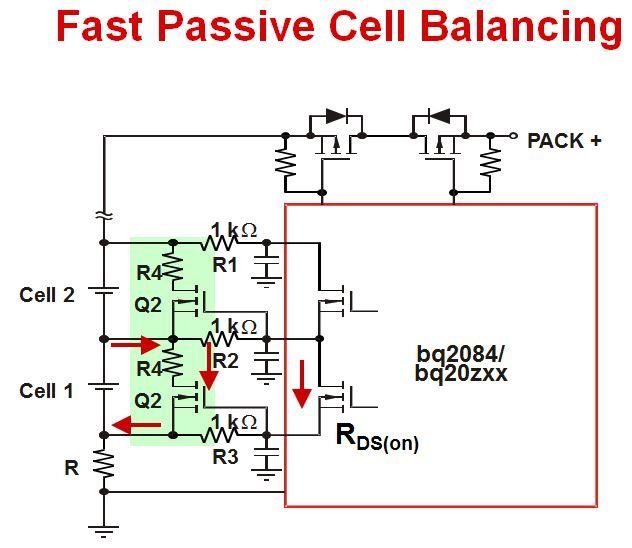Electric Two-wheelers are seen as a key technology for energy conservation and environmentally beneficial transportation thus bringing the need for cell balancing. For its bonuses, such as tiny volume, big capacity, greater energy density, and improved safety, the new traction needs of Electric Two-wheelers, including Li-ion battery pack, are drawing a lot of interest.
Cell balancing is a crucial factor to improve the lifetime and performance of lithium-ion batteries in Electric Two-wheelers. Cell balancing can be defined as the process of maintaining all cells within a battery pack at an equal state of charge (SOC). The aim is to prevent anyone's cell from over-charging or over-discharging, which can lead to capacity loss and shortened battery lifetime.
Cell balancing also helps to equalize the load on each cell in the battery pack. This can improve the overall efficiency of the battery pack. When all cells are balanced, the battery pack can operate at its optimal level, providing more power and longer runtime.

The imbalance in the lithium cells of the pack restricts the battery's capacity. This lowers energy usage efficiency and extends the pack's life.
As a result, battery cell balancing is a fundamental but necessary function of a Battery Management System (BMS) and is required for battery packs. The picture below shows the general concept of cell imbalance for a series-connected 10S pack.
Passive balancing and active balancing are the two most common ways to balance. The conventional passive balance technique prevents excessive energy from cells from leaking into heat. While the active balancing approach involves moving excess power into energy-depleted cells. Both types have advantages and disadvantages. This blog will go through all you need to know about whole-cell balancing in-depth.
Cell Balancing
Before we get started with battery balancing, it's crucial to have a basic understanding of the fundamentals of battery packs. Cell balance is based on the SoC, which is a crucial aspect of the battery pack's condition. The SoC is simply the degree of charge in an electric battery compared to its capacity.
The balancing decisions are determined by the SoC. The objective is to maintain the same SoC in each and every battery at any one moment. BMS software employs a variety of algorithms to come up with precise SoC figures so that balancing choices may be made.
Passive Cell Balancing

The above figure depicts the basic layout of a typical shunting resistor passive cell balancing system. The design dissipates energy from energy-filled cells in the resistors to balance numerous cells at the same time.
The essential aspects to consider when evaluating this design are the resistance size and the balancing of current and time. Furthermore, in order to avoid system deterioration, thermals for heat dissipation must be considered.
In general, passive balancing current ranges from a hundred milliamperes to around 1 Ampere, which means effective balance time calculations are heavily influenced by balancing current. Furthermore, because the balancing current is inversely proportional to cell voltage, it is not constant throughout the charge cycle.
The initial architecture of the circuit permits for a larger balancing current, but there are trade-offs in terms of balance current and required balance time vs. cost. With less complexity, the overall structure and implementation of passive balancing are very cost-effective.
Active Cell Balancing

The transfer of charge from a high-energy cell to a low-energy cell is achieved through bi-directional DC-DC power converter circuits, which are known as active cell balancing topology. There are several types of active balancing technologies based on the form of energy transmission.
The energy can flow from one cell to the whole battery, from the whole battery to one cell, or from one cell to another. The following diagram is an example of how a cell might be used in a power conversion circuit.
The complexity of active cell balancing is determined by two elements: the control logic used to convey energy between cells and the complexity of the bi-directional DC-DC converter section.
The balance current and balancing time are both determined by the control algorithm and DC-DC converter efficiency. There is no theoretical limit for balancing current, but the balance current per cell should not exceed the discharge current specified in the datasheet (most of the Li-Ion cells recommend 1C as an acceptable discharge current).
Active balancing is more costly than passive balancing and necessitates a greater number of sophisticated equipment and software.
The Necessity of Cell Balancing
Cells will always have parameter dispersion, according to well-known and accepted science. This will result in an imbalance in the pack with time. The overall imbalance caused by aging has an impact on battery efficiency and performance. As a consequence, a balancing function should be included in the battery management system.
What we care about is not just the topology, but also whether it can handle the overall imbalance. With SPP Batteries, we worked on this issue extensively. From our experience, we have come to understand that these variations are already going down in freshly built batteries. We will continue to go down as researchers explore new battery technology.
The battery pack benefits from better integration and improved thermal management, resulting in less imbalance over time and a need for balancing that is no longer necessary. All balancing demands may be met with cost-effective solutions when passive balancing is coupled with the proper board-level thermal management.
Conclusion
A battery pack must have a good balance between energy storage, lifetime, safety, and cost. The type of balancing technology used will influence these parameters.
Passive balancing is a simple and cost-effective way to balance cells in a battery pack. However, it may not be sufficient for all applications. Active balancing is more complex and expensive, but it can provide better balancing performance.
The choice of balancing technology depends on the specific application and requirements. In general, passive balancing is suitable for most applications. But active balancing may be necessary for applications with very high energy density or very long lifetime requirements.
